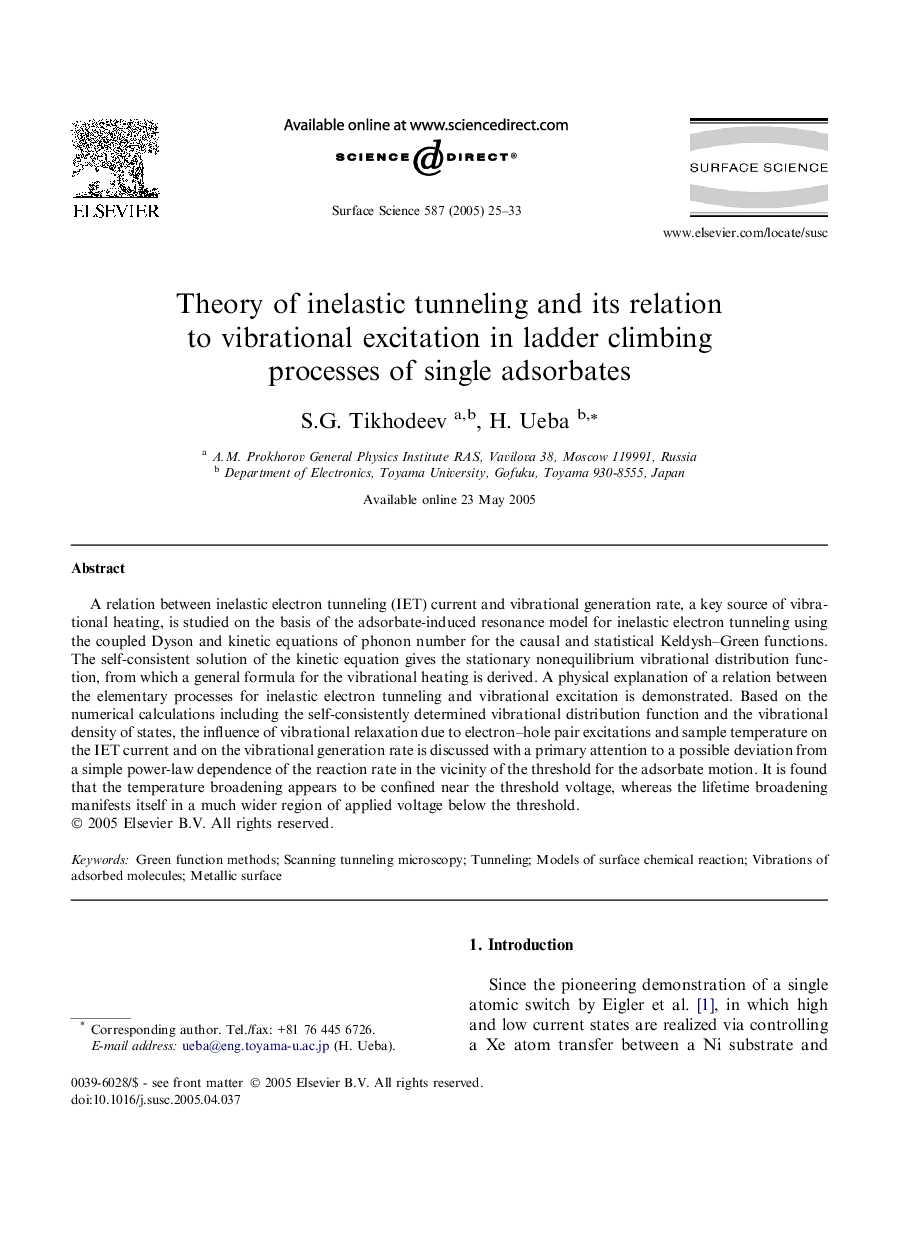| Article ID | Journal | Published Year | Pages | File Type |
|---|---|---|---|---|
| 9594806 | Surface Science | 2005 | 9 Pages |
Abstract
A relation between inelastic electron tunneling (IET) current and vibrational generation rate, a key source of vibrational heating, is studied on the basis of the adsorbate-induced resonance model for inelastic electron tunneling using the coupled Dyson and kinetic equations of phonon number for the causal and statistical Keldysh-Green functions. The self-consistent solution of the kinetic equation gives the stationary nonequilibrium vibrational distribution function, from which a general formula for the vibrational heating is derived. A physical explanation of a relation between the elementary processes for inelastic electron tunneling and vibrational excitation is demonstrated. Based on the numerical calculations including the self-consistently determined vibrational distribution function and the vibrational density of states, the influence of vibrational relaxation due to electron-hole pair excitations and sample temperature on the IET current and on the vibrational generation rate is discussed with a primary attention to a possible deviation from a simple power-law dependence of the reaction rate in the vicinity of the threshold for the adsorbate motion. It is found that the temperature broadening appears to be confined near the threshold voltage, whereas the lifetime broadening manifests itself in a much wider region of applied voltage below the threshold.
Related Topics
Physical Sciences and Engineering
Chemistry
Physical and Theoretical Chemistry
Authors
S.G. Tikhodeev, H. Ueba,
